This article was medically reviewed by Shari Forschen, NP, MA. Shari Forschen is a Registered Nurse at Sanford Health in North Dakota. Shari has worked in healthcare since 1996 and her expertise lies in acute care bedside nursing on a medical oncology floor. She received her degree from Medcenter one College of Nursing in 2003 and her Family Nurse Practitioner Masters from the University of North Dakota in 2014. Shari is a member of the American Nurses Association.
wikiHow marks an article as reader-approved once it receives enough positive feedback. This article received 15 testimonials and 93% of readers who voted found it helpful, earning it our reader-approved status.
This article has been viewed 695,233 times.
Drawing blood quickly and cleanly is an important skill for doctors, nurses, lab personnel, or phlebotomists. Many venipunctures are routine, but you may occasionally encounter some difficult veins. Read on from step number one below for useful information and techniques on hitting those veins.[1]
Steps
Making the Vein More Visible
-
1Make sure your tourniquet has been applied properly. Applying a tourniquet increases the amount of blood in the vein to make them stand out more. The tourniquet should not be so tight that it cuts off the circulation.[2] [3]
- The tourniquet should be put on the arm about four inches above the vein.
- A blood pressure cuff that is inflated to 40–60 mm Hg also works well.
-
2Put a warm pack or water bottle over the area. Warmth will make the patient's veins dilate and expand, making them easier to see.[4]Advertisement
-
3Use proper palpation techniques. Contrary to popular culture, you should palpate the arm, rather than slapping it. Slapping the skin is poor technique that may result in a hematoma. Use your index finger to look for a vein, which feels soft and spongy. Don't use your thumb, as it contains its own pulse.
- The warm pack or water bottle should be put on the area before it is disinfected. Nothing more should touch the area after it is disinfected.
- Do not apply the warm pack or water bottle directly to the skin. Wrap it in a thin towel to prevent burns. If it hurts, it is too hot.
-
4Tell the patient to relax. Many people have needle phobias and nervousness and apprehension is a normal response. Stress not only makes the veins hard to hit, but it could also negatively affect the test results (particularly for biochemistry panels). Reassure your patient and explain that the pain is very brief and minor.
- Tell your patient to try visualization and deep breathing.
- Observe your patient and have them lie down on their back if you think they might faint. This will improve the blood flow to their head. It also reduces their chances of falling and injuring themselves if they do pass out.
Taking Blood from the Forearm
-
1Verify patient information. Verify the patient name, date of birth and reason for blood draw and check the labeling to ensure no mistakes are made. Mislabeling could lead to difficulty processing or even safety issues down the line.
-
2Locate the vein. The inside of the elbow is generally the preferred location because the median cubital vein is usually easily visible. [5]
- The median cubital vein runs between the muscles and may be clearly visible as a blue bulge in the inside of your elbow. If it cannot be seen it can usually be felt. It is also relatively easy to access because the tissue around it prevents it from rolling away from the needle.
- Avoid drawing blood from a place where your veins divide or join together. Doing so increases risk of bleeding under the skin.
-
3Disinfect the area. A common disinfectant is 70 percent alcohol. Wipe an area that is at least two centimeters by two centimeters for at least a half a minute. After a minute or two it will have dried.[6]
- Alcohol is better than iodine because if the iodine gets into the blood it can alter values that the lab may be looking for. If you do use iodine, follow it with a 70% alcohol swab.
- Allow the disinfectant to dry before inserting the needle. Do not blow on or fan it with your hand as this will contaminate the area.
-
4Perform the venipuncture.[7]
- Anchor the vein by pulling the skin below the vein taut. This will prevent the vein from rolling.
- Insert the needle in at a 15 to 30 degree angle and then hold it still while collecting blood.
- Fill the collection tube with blood, following the order of draw as specified by your laboratory.
- Release the tourniquet after 1 minute and before removing the needle. Leaving the tourniquet on for longer than a minute will affect the concentration of red blood cells, possibly altering the test. Withdrawing the needle while the tourniquet is still on will result in pain.
-
5Apply pressure to the puncture area for 5 minutes after the needle is out to stop the bleeding.[8]
-
6Dispose of the needle in a hard sided, biohazard container.
-
7Double check the labeling on the tube to make sure it is accurate.
Troubleshooting
-
1Look for another vein if the median cubital vein is not visible. If you cannot find the vein in the inside of the elbow in either arm, look for another one.[9]
- Move down the forearm looking for the basilic vein or cephalic vein. These veins may also be visible through the skin. Have the patient lower their arm and make a fist to make the veins more obvious.
- The cephalic vein runs along the radial side of the forearm. The basilic vein runs along the ulnar side. The basilic vein is less frequently used than the cephalic. It is more likely to roll away from the needle than the cephalic vein because it is not held as tightly in place by the tissues around it.
- If no veins can be accessed, find the metacarpal veins on the back of the hands. They are usually very visible and can be palpated. They should not be used for elderly patients because the skin is not as supple and does not support the veins as well. In addition, the veins themselves become more fragile.
-
2Notice sites to avoid. Do not draw blood from areas that:
- Are near an infection
- Have scarring
- Have a healed burn
- Are on an arm that is on the same side as where the patient had a mastectomy or fistula placed
- Are bruised
- Are above an IV line
- Are on an arm where the patient has a cannula, fistula, or vascular graft
-
3Correct improper needle placement. Occasionally, you may encounter problems with the needle, such as going too far into the tissues or inserting it at too low of an angle (so the bevel is against the wall of the vein and impedes blood flow).[10]
- Pull the needle back a little bit without removing it from the skin.
- Change the angle of the needle while it is still under the skin so that it can be inserted into the vein.
-
4Give up and have a colleague do the procedure if your second attempt fails. Protocol in many laboratories dictates that phlebotomists must attempt a venipuncture two times, and to have another person do it if both attempts are unsuccessful.[11]
Expert Q&A
Did you know you can get expert answers for this article?
Unlock expert answers by supporting wikiHow
-
QuestionPhlebotomists- How do you approach a difficult vein? I am still new and not comfortable with them yet.
 Shari Forschen, NP, MAShari Forschen is a Registered Nurse at Sanford Health in North Dakota. Shari has worked in healthcare since 1996 and her expertise lies in acute care bedside nursing on a medical oncology floor. She received her degree from Medcenter one College of Nursing in 2003 and her Family Nurse Practitioner Masters from the University of North Dakota in 2014. Shari is a member of the American Nurses Association.
Shari Forschen, NP, MAShari Forschen is a Registered Nurse at Sanford Health in North Dakota. Shari has worked in healthcare since 1996 and her expertise lies in acute care bedside nursing on a medical oncology floor. She received her degree from Medcenter one College of Nursing in 2003 and her Family Nurse Practitioner Masters from the University of North Dakota in 2014. Shari is a member of the American Nurses Association.
Master's Degree, Nursing, University of North Dakota
-
QuestionI have small veins and have had problems with blood withdrawals. Is there some kind of exercise to help improve your veins or make them bigger and more visible?
 Shari Forschen, NP, MAShari Forschen is a Registered Nurse at Sanford Health in North Dakota. Shari has worked in healthcare since 1996 and her expertise lies in acute care bedside nursing on a medical oncology floor. She received her degree from Medcenter one College of Nursing in 2003 and her Family Nurse Practitioner Masters from the University of North Dakota in 2014. Shari is a member of the American Nurses Association.
Shari Forschen, NP, MAShari Forschen is a Registered Nurse at Sanford Health in North Dakota. Shari has worked in healthcare since 1996 and her expertise lies in acute care bedside nursing on a medical oncology floor. She received her degree from Medcenter one College of Nursing in 2003 and her Family Nurse Practitioner Masters from the University of North Dakota in 2014. Shari is a member of the American Nurses Association.
Master's Degree, Nursing, University of North Dakota
-
QuestionWhat if the veins are nearly finished in your arm or hand? Where do I go then?
 Shari Forschen, NP, MAShari Forschen is a Registered Nurse at Sanford Health in North Dakota. Shari has worked in healthcare since 1996 and her expertise lies in acute care bedside nursing on a medical oncology floor. She received her degree from Medcenter one College of Nursing in 2003 and her Family Nurse Practitioner Masters from the University of North Dakota in 2014. Shari is a member of the American Nurses Association.
Shari Forschen, NP, MAShari Forschen is a Registered Nurse at Sanford Health in North Dakota. Shari has worked in healthcare since 1996 and her expertise lies in acute care bedside nursing on a medical oncology floor. She received her degree from Medcenter one College of Nursing in 2003 and her Family Nurse Practitioner Masters from the University of North Dakota in 2014. Shari is a member of the American Nurses Association.
Master's Degree, Nursing, University of North Dakota
Warnings
- All materials which have been contaminated with blood should be disposed of in a biohazard container that is puncture resistant, such as a Sharps container.⧼thumbs_response⧽
- Single use materials such as needles should never be reused.⧼thumbs_response⧽
References
- ↑ https://nurse.org/articles/how-nurses-professionally-draw-blood/
- ↑ https://www.guideline.gov/content.aspx?id=37621
- ↑ http://www.ncbi.nlm.nih.gov/books/NBK138665/
- ↑ https://www.guideline.gov/content.aspx?id=37621
- ↑ https://nurse.org/articles/how-nurses-professionally-draw-blood/
- ↑ http://www.ncbi.nlm.nih.gov/books/NBK138665/
- ↑ http://www.ncbi.nlm.nih.gov/books/NBK138665/
- ↑ http://www.ncbi.nlm.nih.gov/books/NBK138665/
- ↑ https://www.unitekcollege.edu/blog/stick-like-a-pro-tips-for-mastering-the-art-of-venipuncture/
About This Article
If you’re trying to draw blood from a hard-to-hit vein, first, tie a tourniquet about 4 inches above where you want to insert the needle. Then, put a warm pack or warm water bottle over the area, since heat makes veins dilate and expand. Next, palpate the arm rather than slap at it, since slapping can give your patient a hematoma. When you’ve targeted a vein, try to get your patient to relax by having them lie down or do some deep breathing exercises, since stress can make veins harder to hit. For tips from our Nurse Practitioner on how to find another vein if the median cubital vein isn’t visible, scroll down!
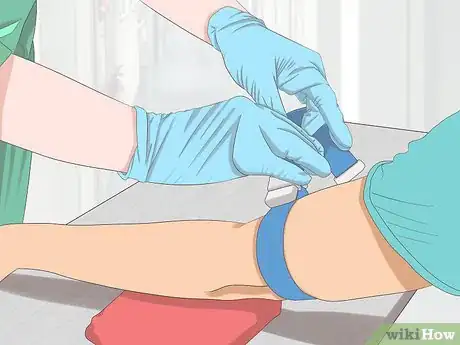
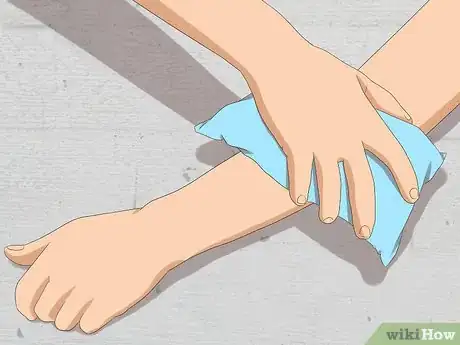
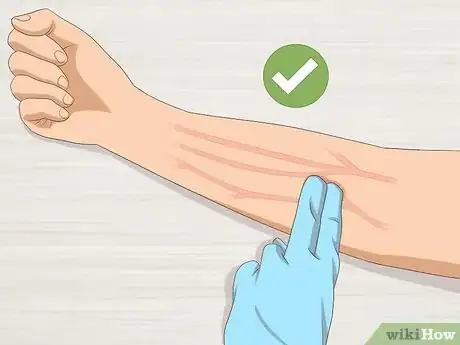


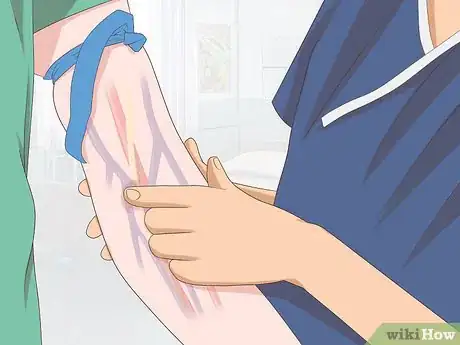
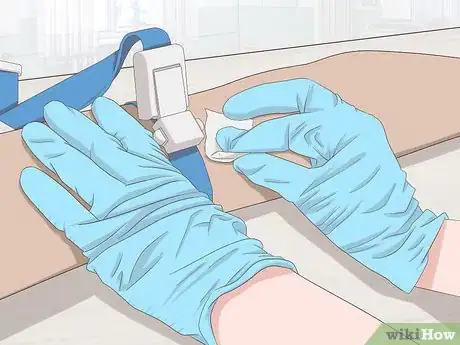
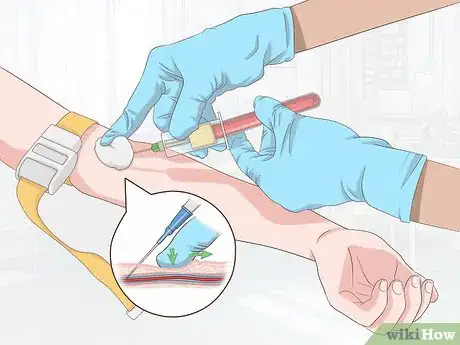
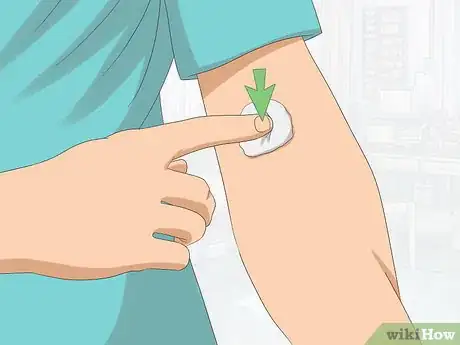
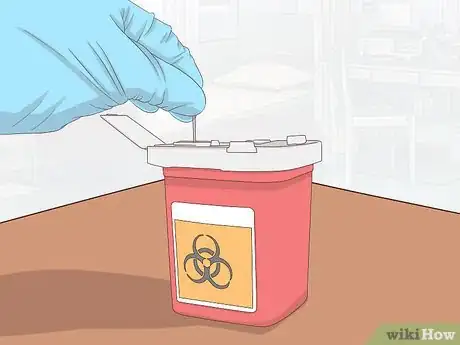
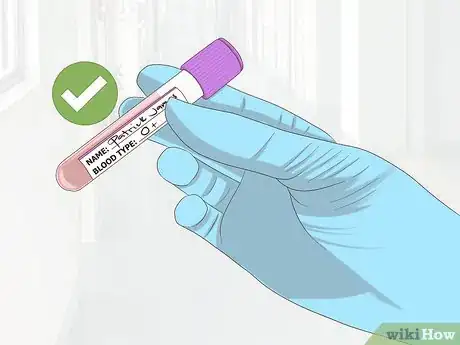
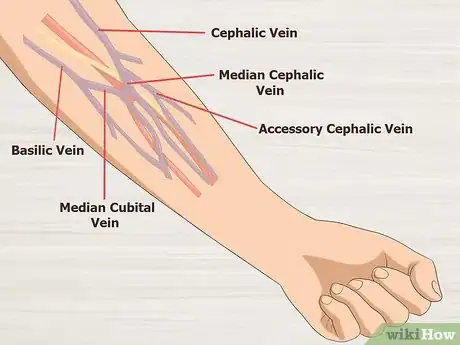
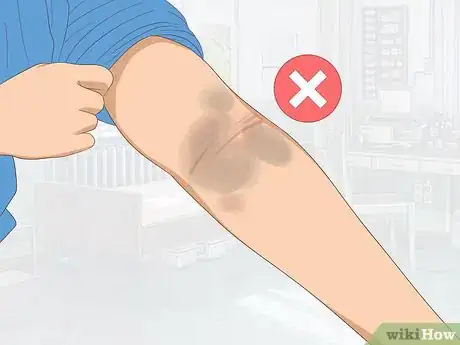
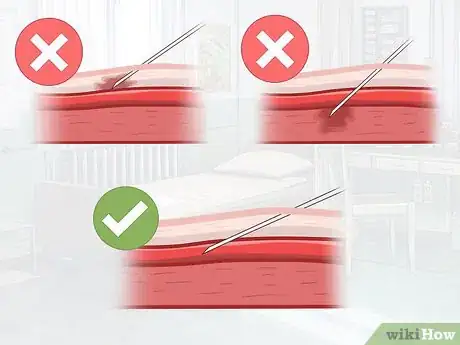
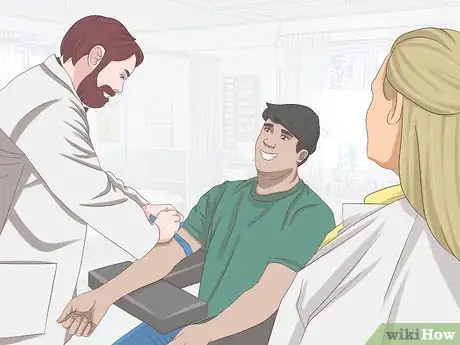

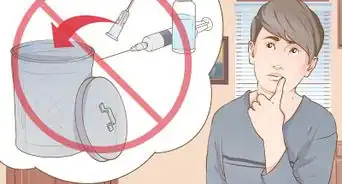

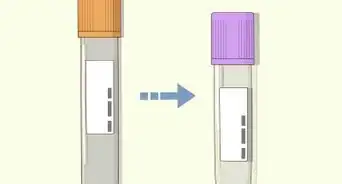
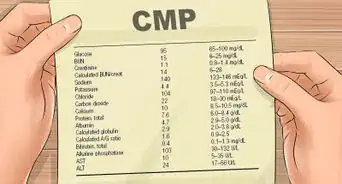
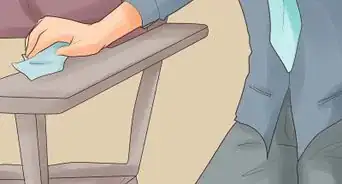
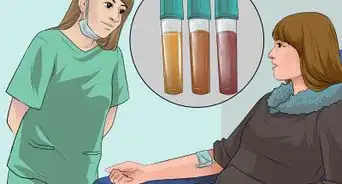

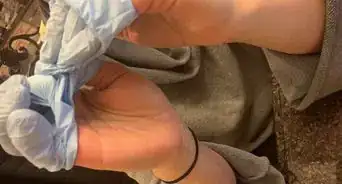


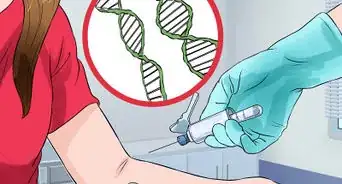
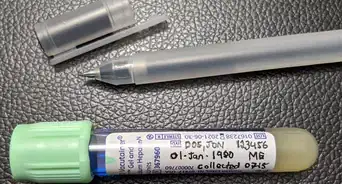












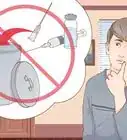

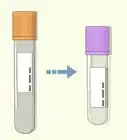




































Medical Disclaimer
The content of this article is not intended to be a substitute for professional medical advice, examination, diagnosis, or treatment. You should always contact your doctor or other qualified healthcare professional before starting, changing, or stopping any kind of health treatment.
Read More...